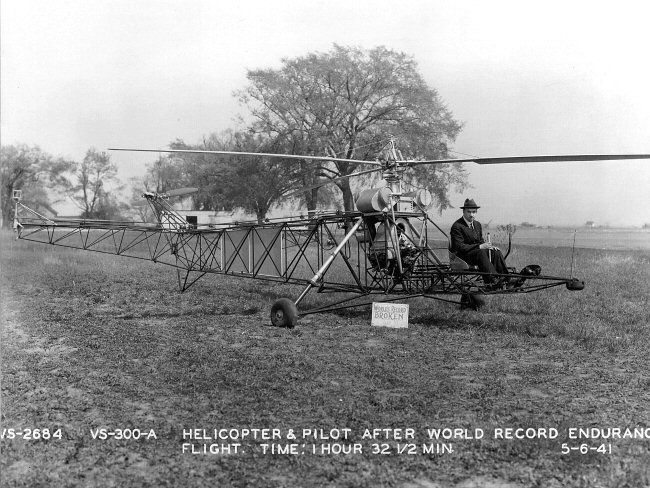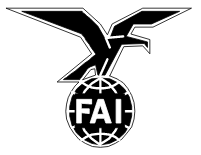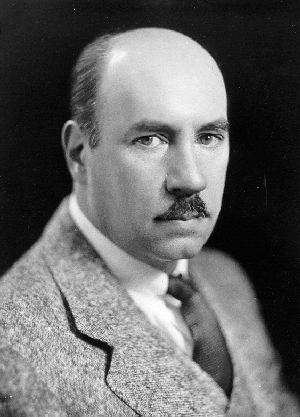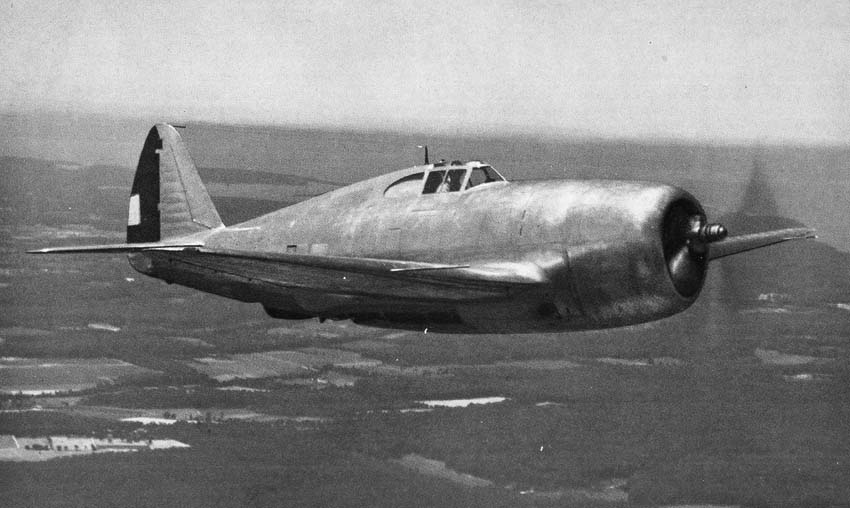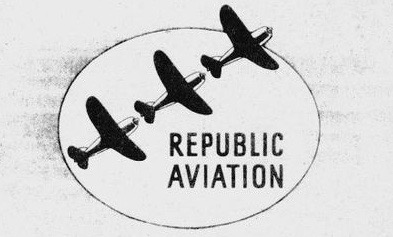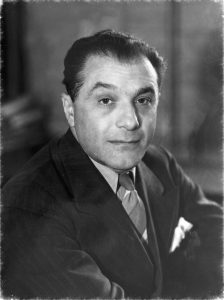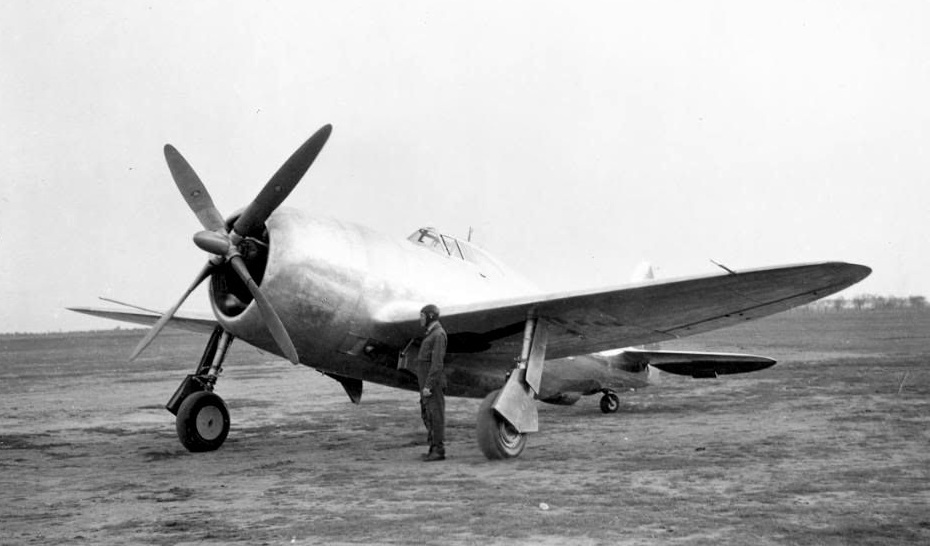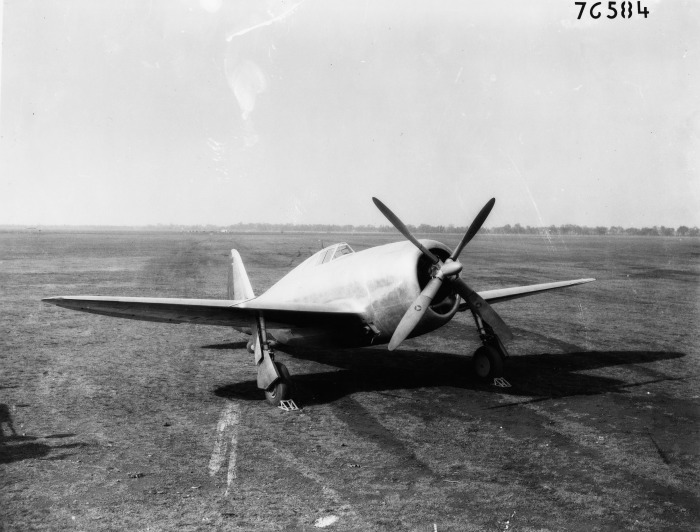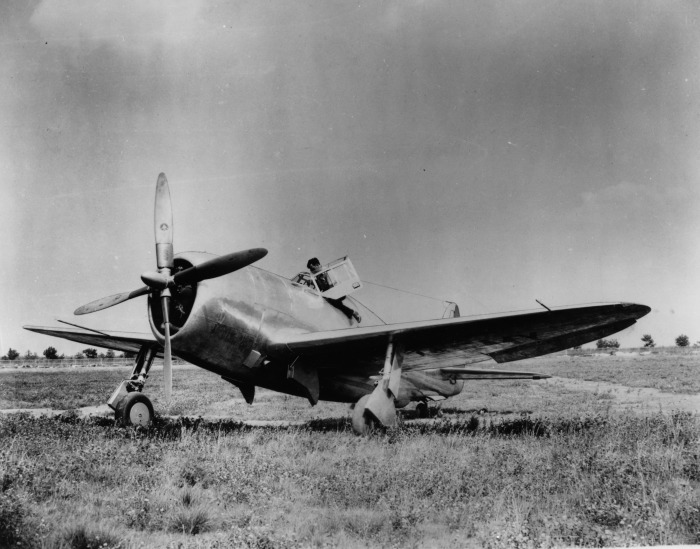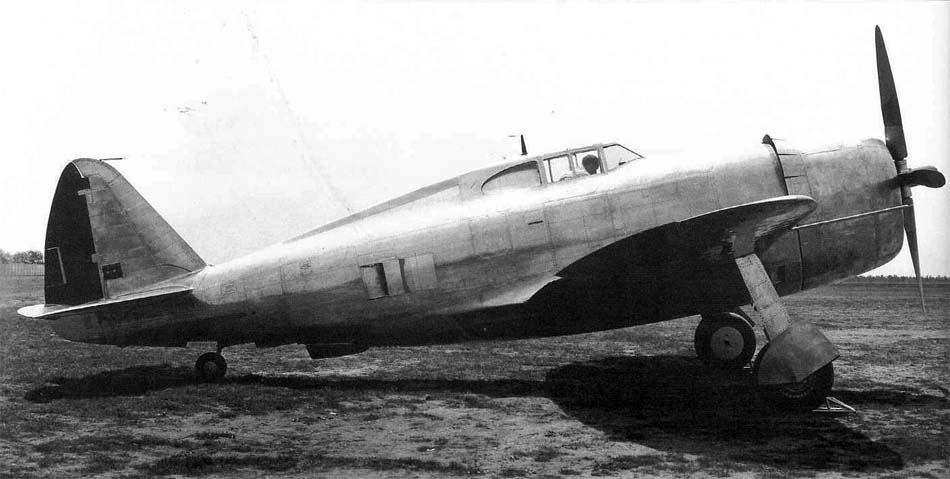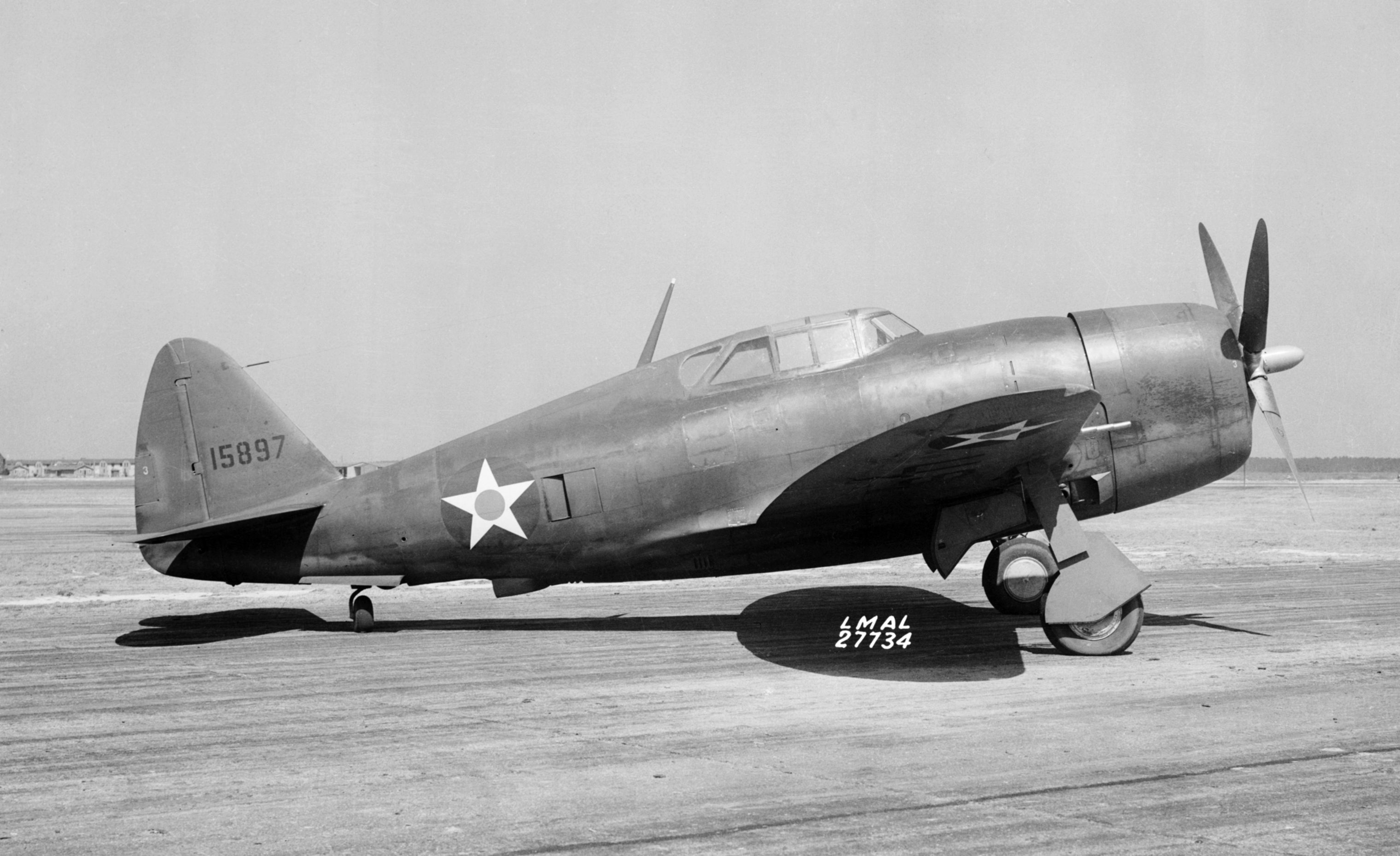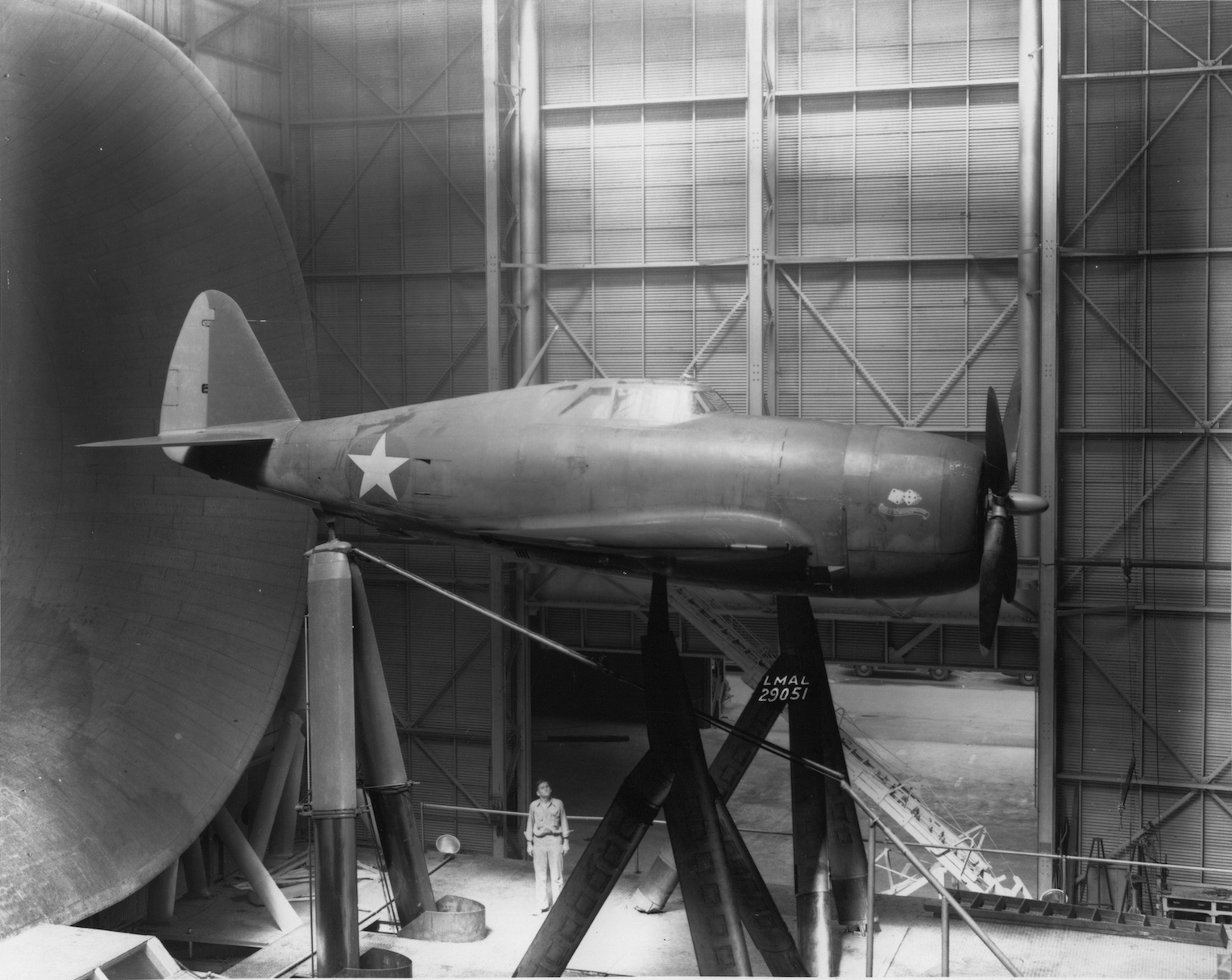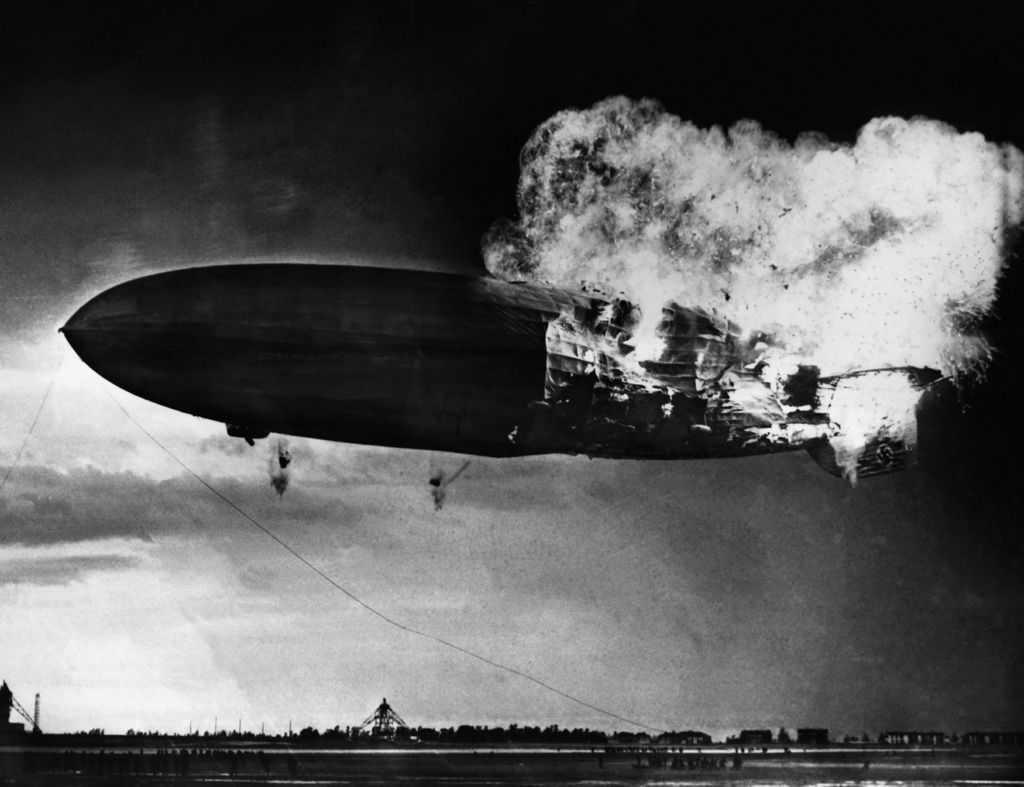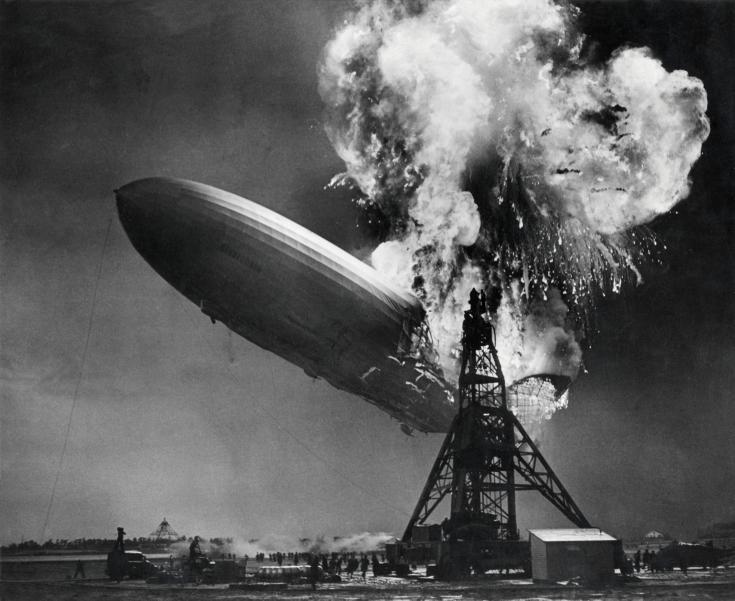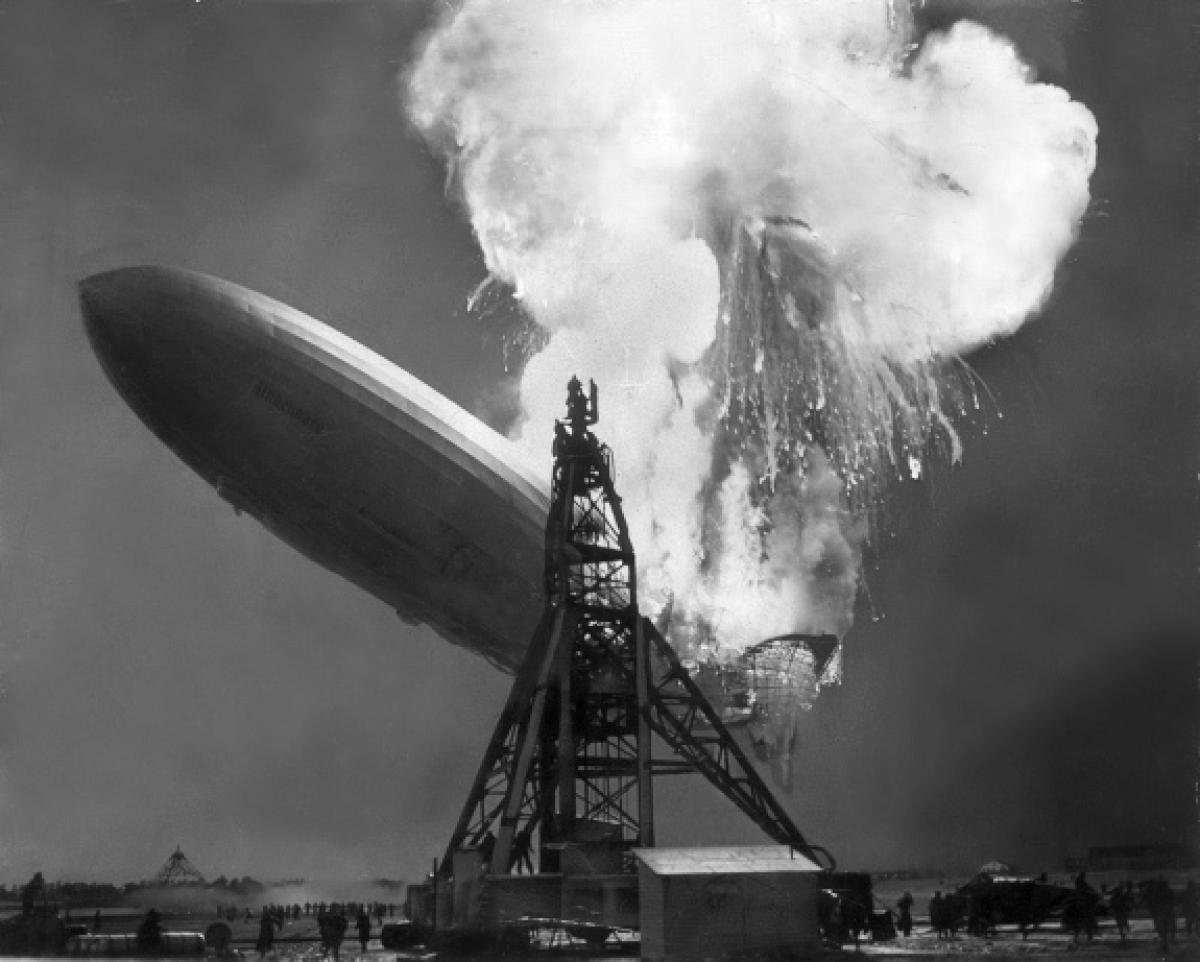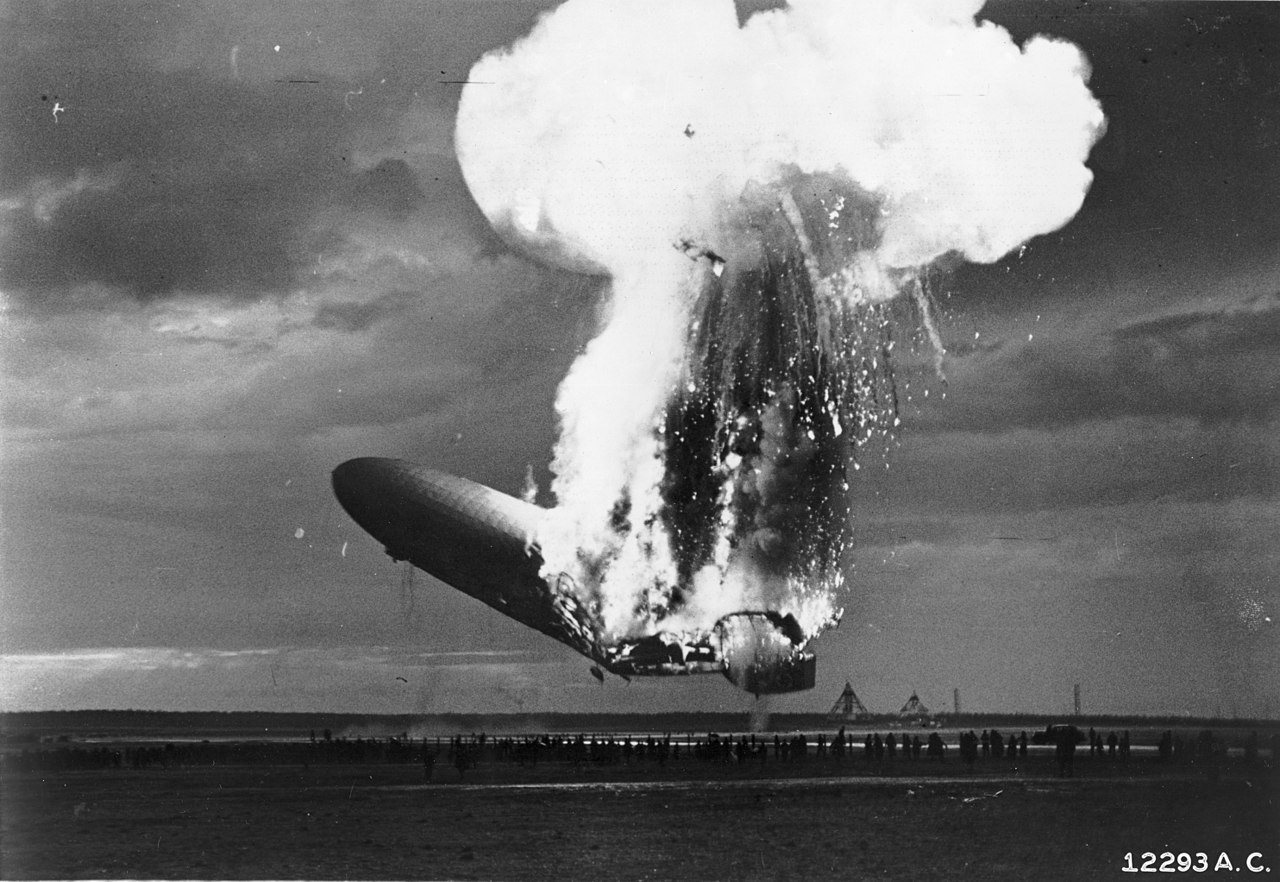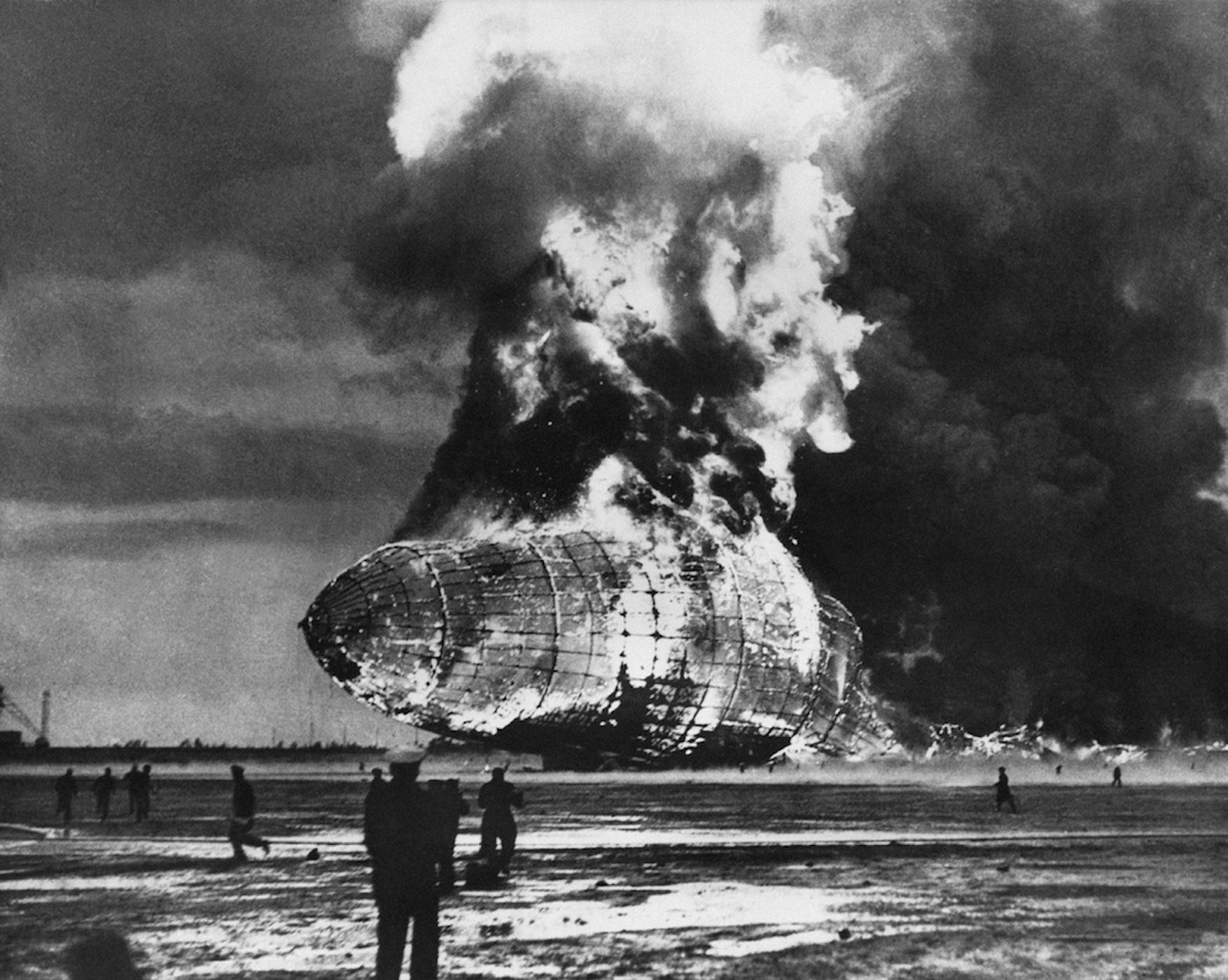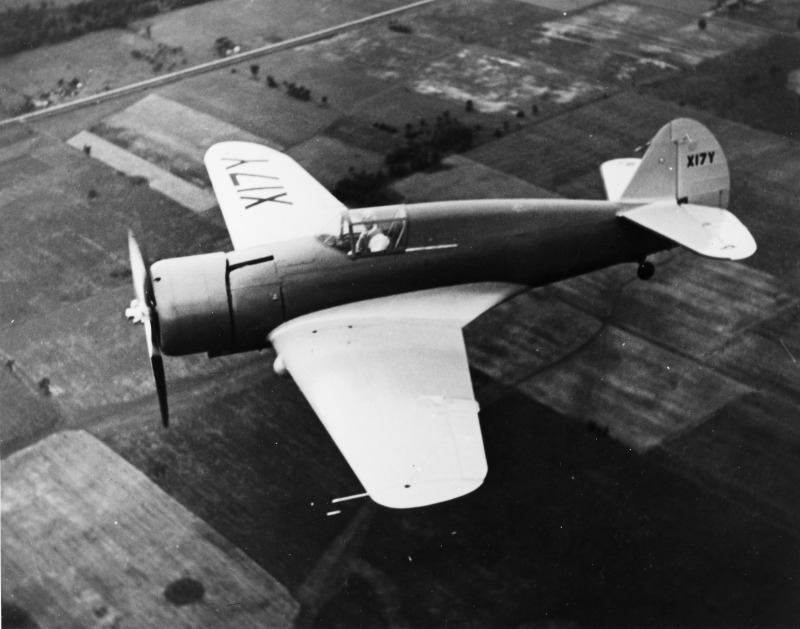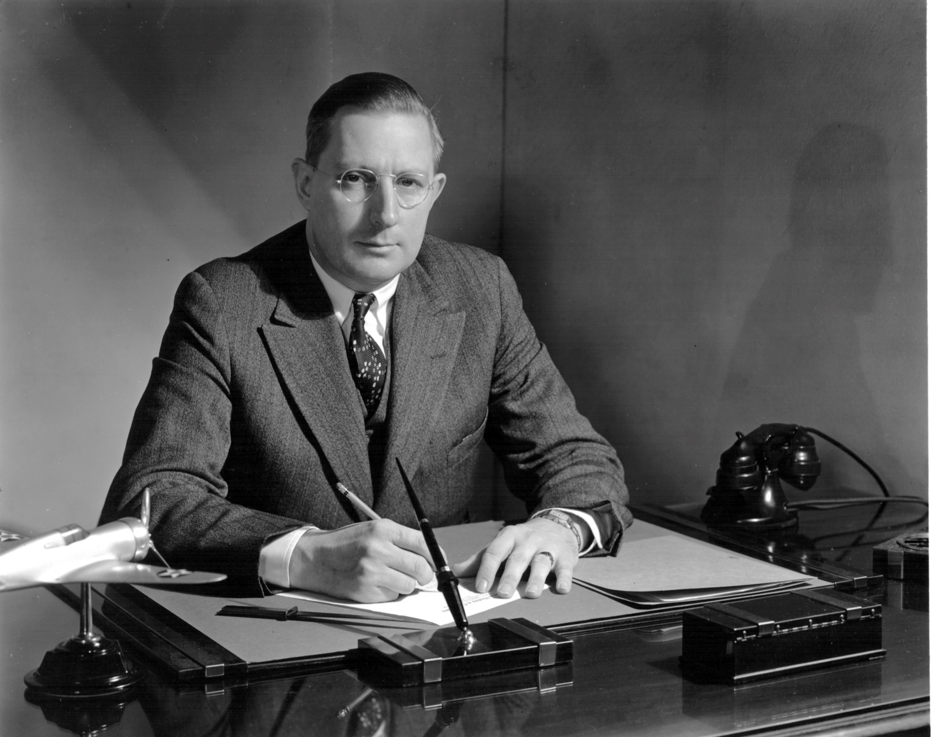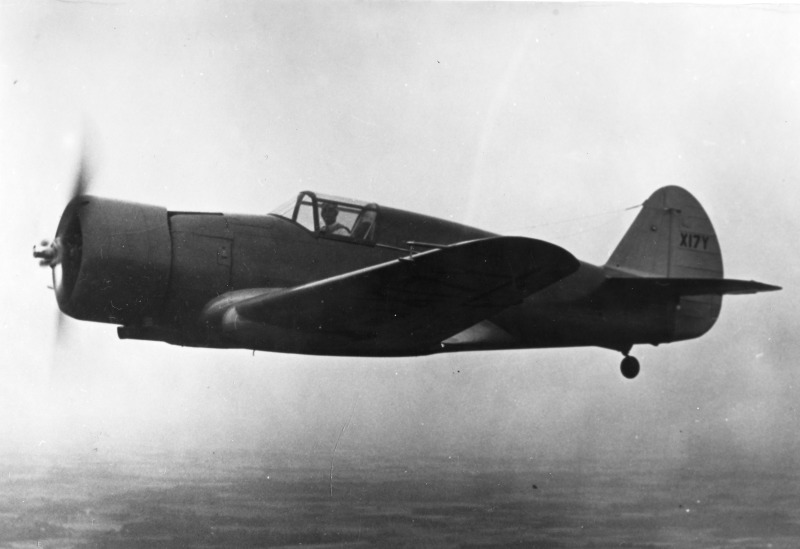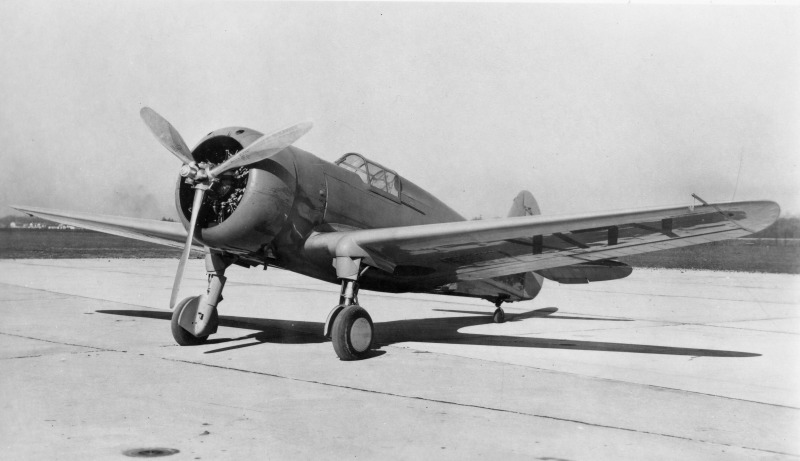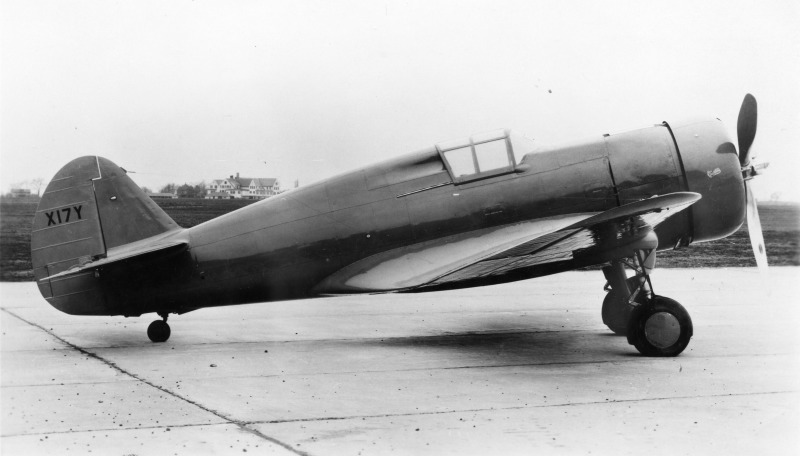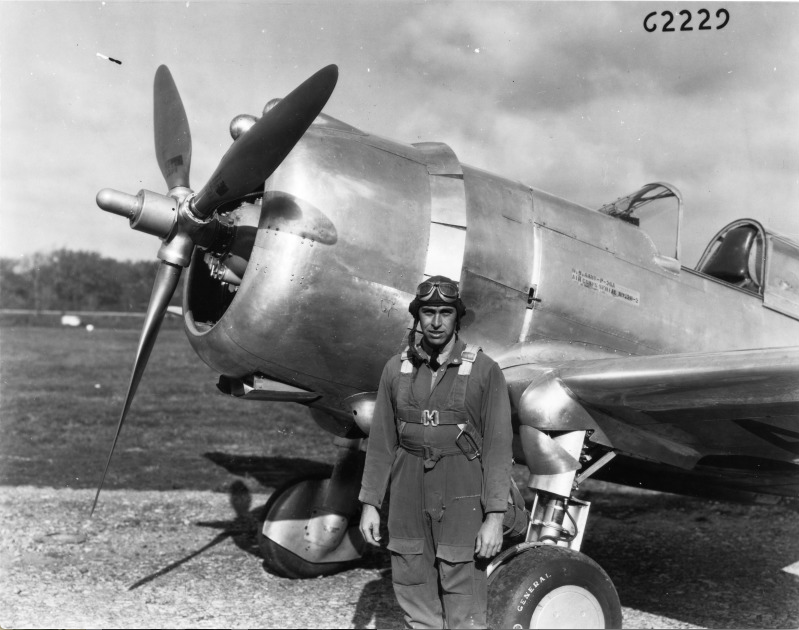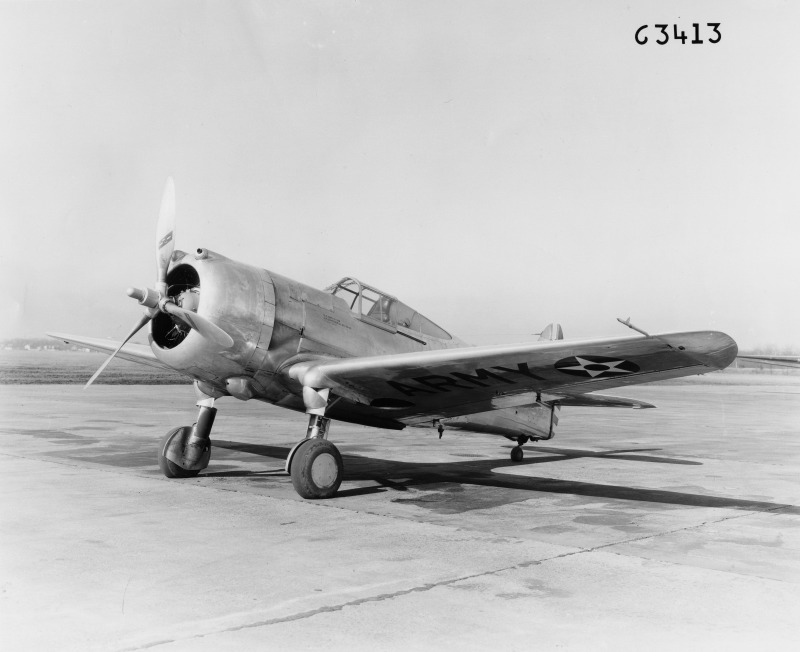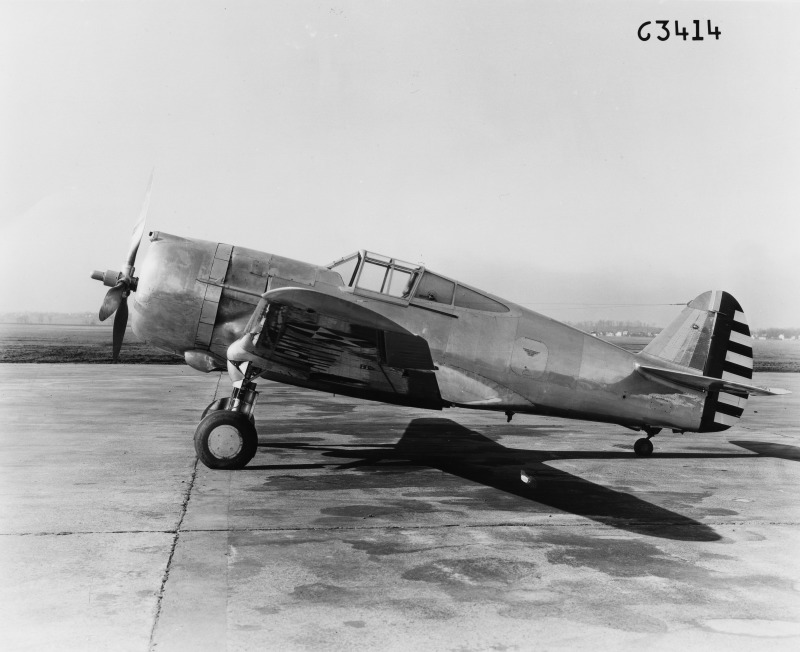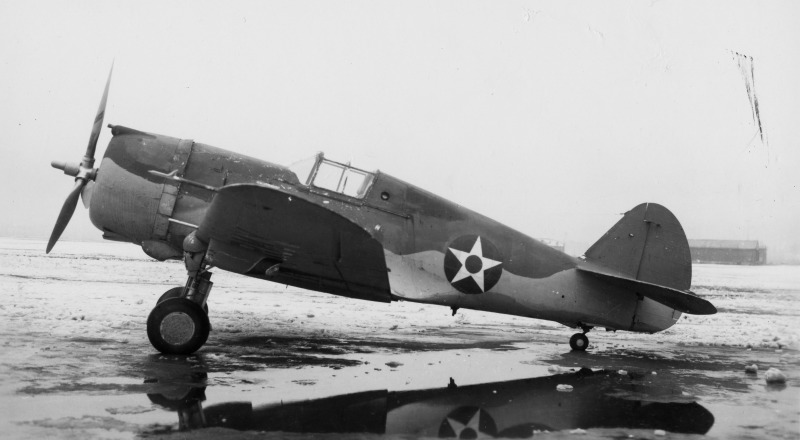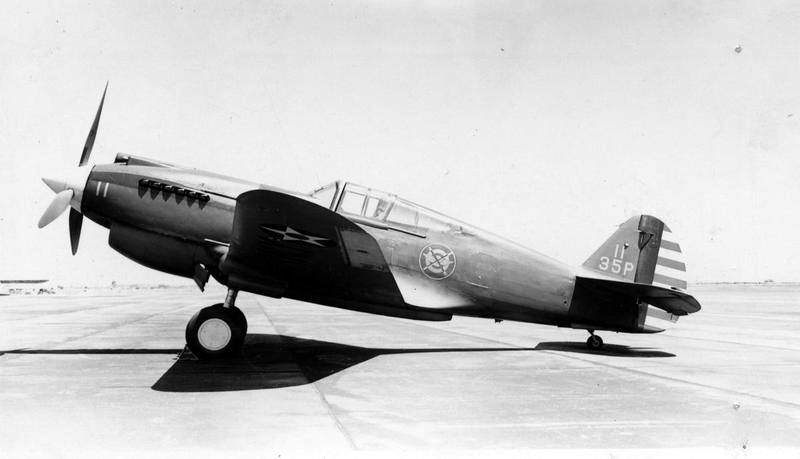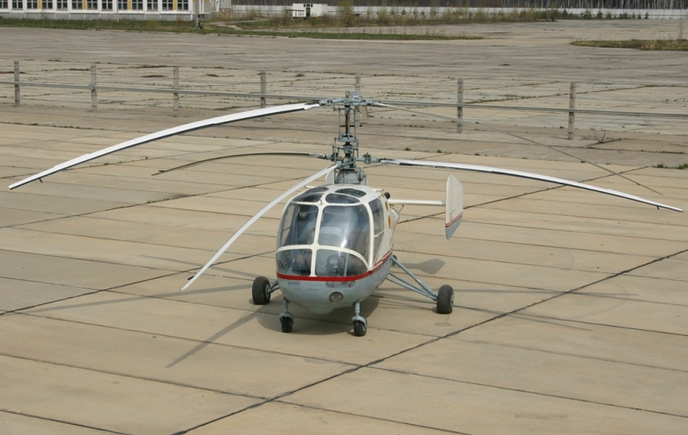
 6 May 1959: Vsevolod Vladimirovich Vinitsky (Всеволод Владимирович Виницкий), with Sergei P. Sanayev, flew a Kamov Ka-15 coaxial helicopter to set a Fédération Aéronautique Internationale (FAI) World Record for Speed Over a Closed Circuit of 500 Kilometers Without Payload. The helicopter’s average speed over the course was 170.45 kilometers per hour (105.92 miles per hour).¹
6 May 1959: Vsevolod Vladimirovich Vinitsky (Всеволод Владимирович Виницкий), with Sergei P. Sanayev, flew a Kamov Ka-15 coaxial helicopter to set a Fédération Aéronautique Internationale (FAI) World Record for Speed Over a Closed Circuit of 500 Kilometers Without Payload. The helicopter’s average speed over the course was 170.45 kilometers per hour (105.92 miles per hour).¹
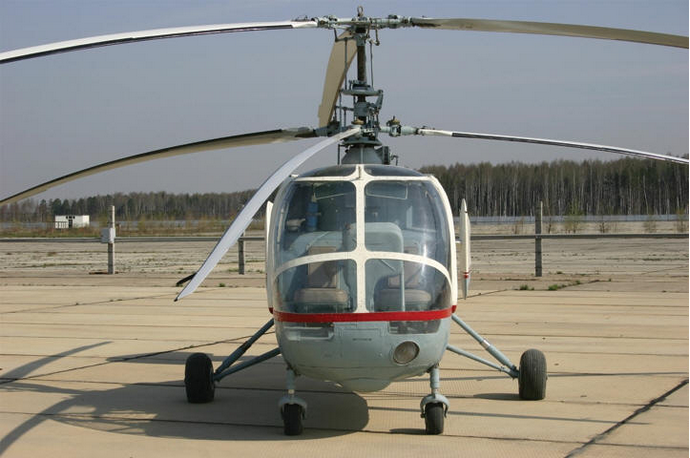
 The Ka-15 was a single-engine, two-place, light helicopter, flown by a single pilot. The protototype first flew 14 April 1953, with Dmitry Konstantinovich Efremov, chief test pilot for the Kamov Design Bureau. The helicopter used two fully-articulated, three-bladed, counter-rotating coaxial rotors. The helicopter had two vertical fins mounted at the ends of a horizontal stabilizer, and four-wheeled fixed landing gear.
The Ka-15 was a single-engine, two-place, light helicopter, flown by a single pilot. The protototype first flew 14 April 1953, with Dmitry Konstantinovich Efremov, chief test pilot for the Kamov Design Bureau. The helicopter used two fully-articulated, three-bladed, counter-rotating coaxial rotors. The helicopter had two vertical fins mounted at the ends of a horizontal stabilizer, and four-wheeled fixed landing gear.
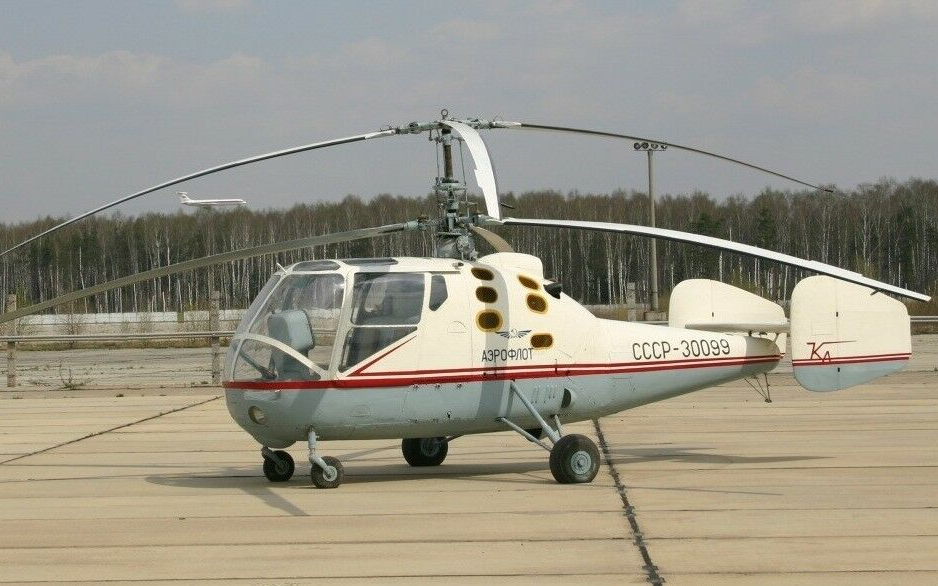
The fuselage of the Ka-15 was 6.26 meters (20 feet, 6.5 inches) long. The main rotors’ diameter was 9.96 meters (32 feet, 8.1 inches), and the overall height of the the helicopter was 3.35 meters (10 feet, 11.9 inches). The span of the horizontal stabilizer and vertical fins were 2.85 meters (9 feet, 4.2 inches). The Ka-15 had an empty weight of 996 kilograms (2,196 pounds), normal takeoff weight of 1,360 kilograms (2,998 pounds), and maximum takeoff weight (MTOW) of 1,460 kilograms (3,219 pounds).
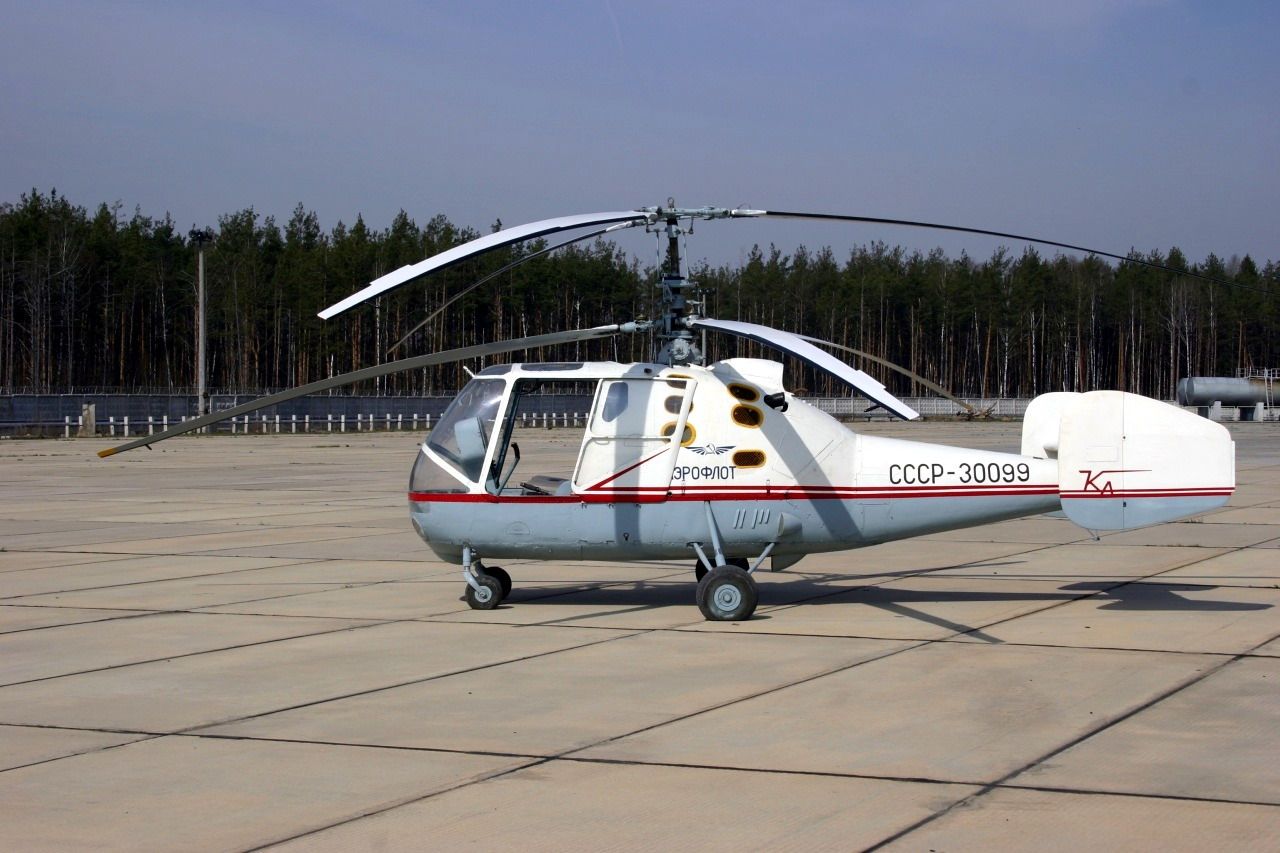
The rotors turn at 333 r.p.m. The upper rotor turned clockwise, as seen from above. (The advancing blade is on the left), and the lower blades turn counter-clockwise (their advancing blades are on the right). The area of the main rotor disc was 155.83 square meters (1,677.29 square feet) with a solidity ratio of 3% per rotor. (This is the lowest coefficient of disc area of any helicopter.) Each main rotor blade was trapezoidal, with a theoretical chord at the axis of rotation of 300 millimeters (11.8 inches), narrowing to 100 millimeters (3.9 inches) at the blade tip. The blades incorporated 12° of negative twist.
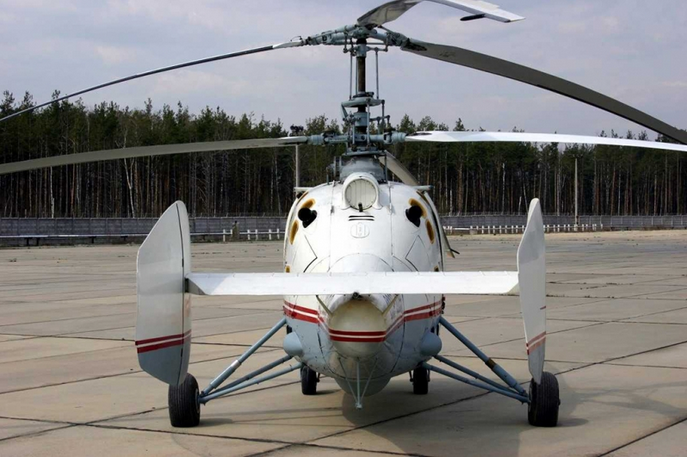
![]() The Ka-15 was powered by a single air-cooled, supercharged 10.131 liter (618.234 cubic inches) Ivchenko AI-14V nine-cylinder radial engine with a compression ratio of 5.9:1. The engine was rated at 188 kilowatts (252 horsepower). It weighed approximately 200 kilograms (441 pounds).
The Ka-15 was powered by a single air-cooled, supercharged 10.131 liter (618.234 cubic inches) Ivchenko AI-14V nine-cylinder radial engine with a compression ratio of 5.9:1. The engine was rated at 188 kilowatts (252 horsepower). It weighed approximately 200 kilograms (441 pounds).
The helicopter could carry a single passenger or 364 kilograms (802 pounds) of cargo. (Interestingly, the contemporary single main rotor/tail rotor Mil Mi-1 helicopter required 575 horsepower to lift the same payload as the Ka-15.)
The Ka-15 had a cruise speed 120 kilometers per hour (75 miles per hour) and maximum speed 155 kilometers per hour (96 miles per hour). The service ceiling was 3,500 meters (11,483 feet). It could hover out of ground effect (HOGE) at 600 meters (1,969 feet). The helicopter had a normal range of 278 kilometers (173 miles) and maximum range of 520 kilometers (323 miles).
The performance of the Ka-15 was better than had been predicted. After several years of testing, the Ka-15 entered production in 1956. It was the first mass-produced coaxial helicopter, with approximately 375 being built by Aircraft Factory No. 99 at Ulan-Ude, the capitol city of the Buryat-Mongolian Autonomous Soviet Socialist Republic.
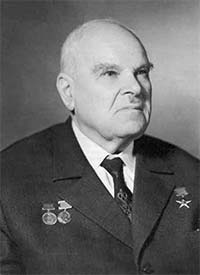
In a coaxial rotor system, one rotor is placed above the other, with the drive shaft for the upper rotor inside the hollow drive shaft of the lower. As in tandem rotor helicopters, each counter-rotating rotor counteracts the torque effect of the other. There is no anti-torque rotor (tail rotor) required. In helicopters using a tail rotor, as much as 30% of engine power is required to drive the tail rotor. With counter-rotating rotors, all of the engine’s power can be used to provide lift and thrust.
A second benefit of a coaxial rotor is that the dissymetry of lift of each rotor is also canceled out. There is no translating tendency while in a hover, and higher forward speeds are possible because the effect of retreating blade stall is reduced. A helicopter with coaxial rotors is more compact than a similar helicopter with tandem rotors. This makes it useful for operations in confined areas or aboard ships.
Nikolai Ilich Kamov was previously known for his autogyro designs, which were first produced in 1929. These included the Tsentralniy Aerogidrodinamicheskiy Institut (Central Aero-Hydrodynamic Institute) TsAGI A-7, which was the first armed autogyro. The Kamov Design Bureau was established 7 October 1948 at Lyubertsy, near Moscow, Russia.
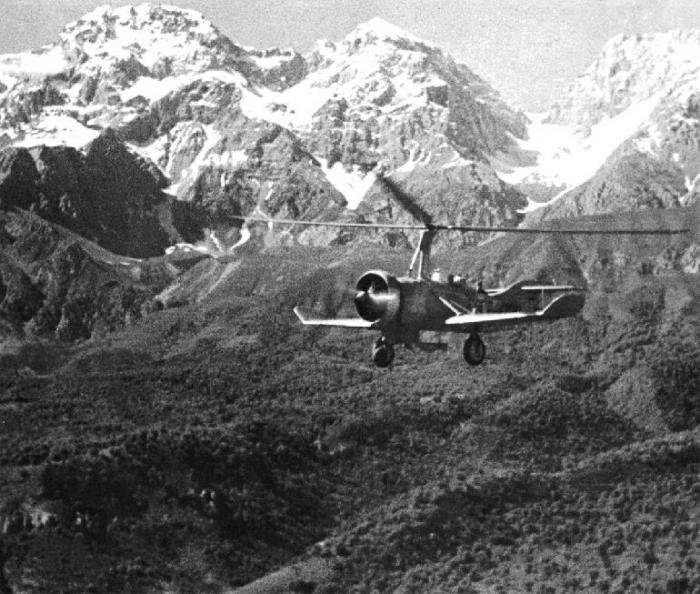
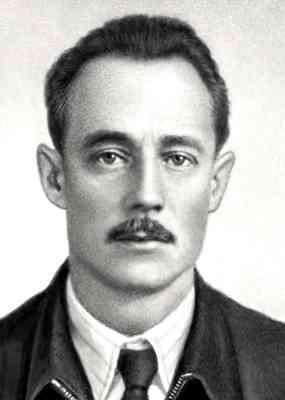
Vsevolod Vladimirovich Vinitsky was born 11 February 1915 at Omsk, Akmola, Imperial Russia. In 1932, he graduated from the Ural Geological Prospecting Technical School at Chelyabinsk, and in 1933 Sverdlovsk glider school. Vsevolod Vladimirovich attended the Polar Aviation Administration (Nikolaev) school of marine pilots, Glavsevmorputi, in 1939.
Vsevolod Vladimirovich entered the Red Army in 1941. He served with the 33rd Airborne Squadron (Western Front) during September and November of that year, followed by the 7th Airborne Squadron (WF); From March to Spetember 1942, he was a commander with the 7th Airborne Corps (WF). The then commanded the 2nd Airborne Regiment (Ukranian Front) until May 1944. He flew 44 combat sorties
In August 1945, Vsevolod Vladimirovich assumed command of the 51st Transport Aviation Regiment on the Transbaikal Front.
After the Great Patriotic War (World War II), Vinitsky was a pilot for Polar Aviation, then in 1950, he bacame a test pilot for Mil OKB. He made the first flights of the Mil Mi-1U and the Mi-4.
Flying a Mil Mi-1, he performed first engine-off touch-down autorotation in the Soviet Union. He perfected helicopter flight under icing and instrument meteorological conditions. He later became a test pilot at Gromov Flight Research Institute at Zhukovsky. With Dmitry Konstantinovich Efremov, Vsevolod Vladimirovich piloted the Kamov Ka-22 gyrodyne. In 1963 he worked for the TsAGI planetary station
Vsevolod Vladimirovich Vinitsky died at Moscow, 12 September 1992 at the age of 77 years. He was buried at the Kuzminsky Cemetery, Moscow.
¹ FAI Record File Number 766
© 2019, Bryan R. Swopes
